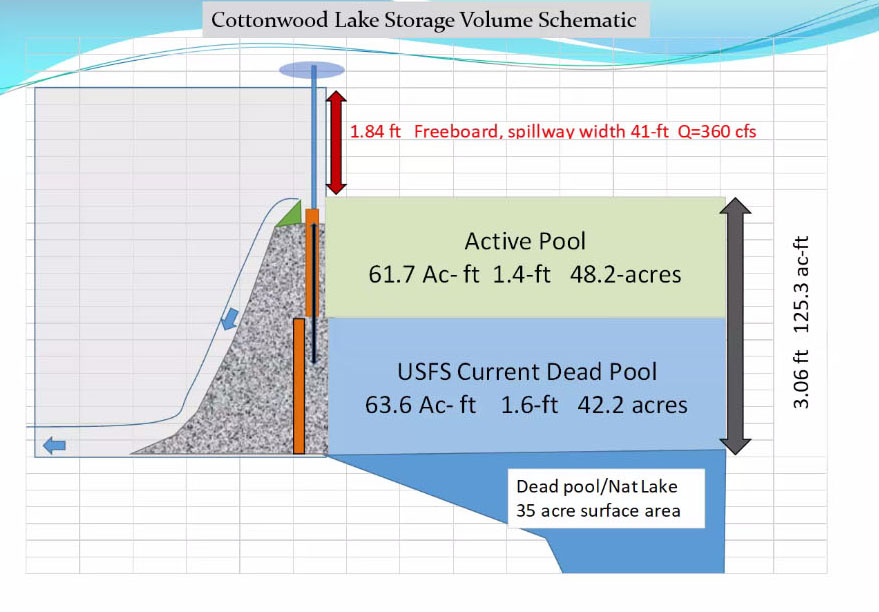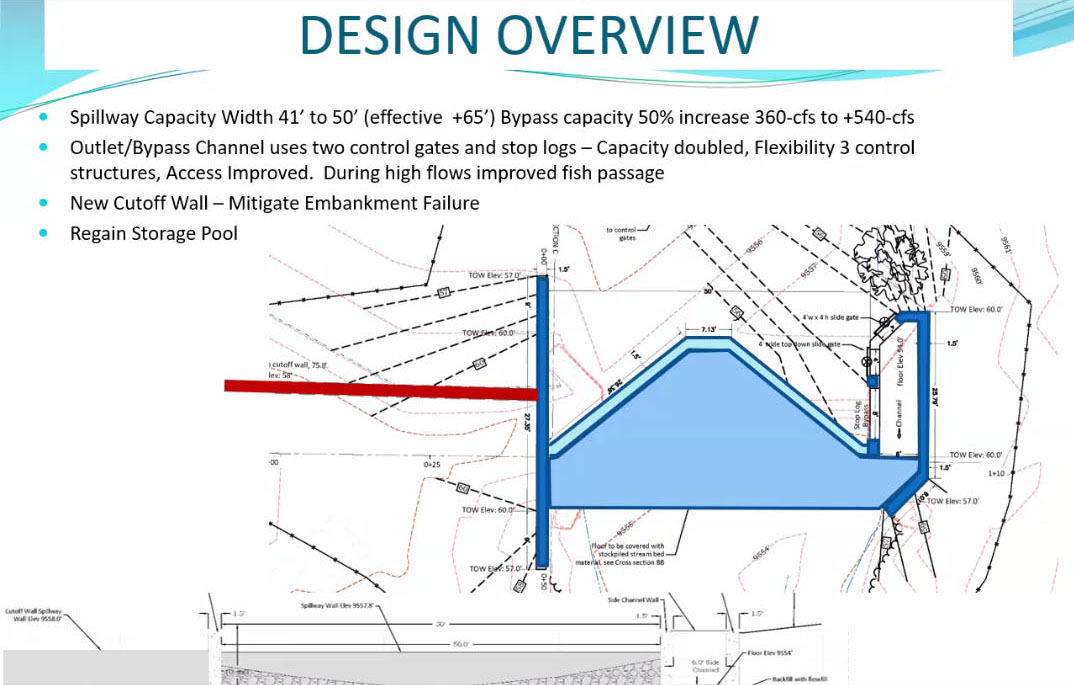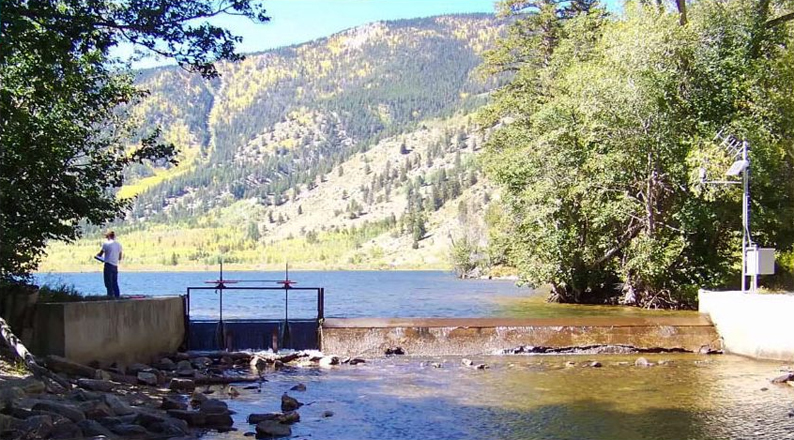The Upper Arkansas Water Conservancy District has embarked upon a project to replace the Cottonwood Lake dam and overcome operational limitations that restrict the reservoir’s usefulness for water storage.
The main goal of the dam upgrade is to “regain lost storage volume,” said engineer Chris Manera, who updated Upper Ark officials on the project at their February board meeting.
The 1950s-era dam is located in the San Isabel National Forest between Buena Vista and Cottonwood Pass. Before the U.S. Forest Service built the dam, the natural lake had a 35-acre surface area, Manera said. The dam raised the water level by 3 feet, adding 125 acre-feet of storage capacity.
However, design limitations, combined with deterioration of the dam, restrict the reservoir’s usable space, known as the “active pool,” to the top 1.4 feet, or 61.7 acre-feet of water, leaving a “dead pool” of 63.6 acre-feet.

The design for the new dam will allow access to that dead pool, and the Town of Buena Vista has an agreement with the Upper Ark District to share some of that usable space once the old dam has been replaced.
The new design incorporates a separate spillway channel and two different types of control gates, which will enhance operational control and flexibility, Manera said.
He said additional benefits include:
- Improved dam safety.
- Reduced flood risk.
- Increased spillway capacity (almost double).
- Improved fish passage upstream.
- Reduced risk of an embankment failure where the dam ties into the shoreline.

Manera said the new design will need approval from the Colorado Division of Water Resources Dam Safety Branch, and the District will need to negotiate a new special use permit with the Forest Service.
The Upper Ark District currently has an agreement with the Forest Service that allows the District to store 50 acre-feet of water in Cottonwood Lake. In exchange for this storage capacity, the District uses some of its water to replace water the Forest Service loses to evaporation under its 1942 storage right.
Upper Ark General Manager Terry Scanga said the Forest Service had informed the District that a new permit would be required in which the Forest Service would charge the District for the amount of water it stores in the reservoir. “But we would also be able to charge the Forest Service for (replacing) evaporative losses … somewhere around 20 acre-feet per year.”
The project will also require an environmental assessment, and Scanga said the District will have to pay the Forest Service for that work, which will be less expensive than if the District were to do the work itself.





